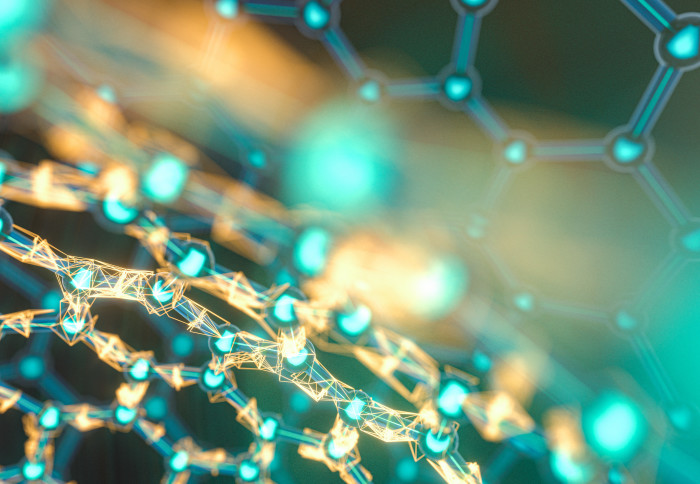New catalyst offers a sustainable future for solar fuel production
Researchers have found a new versatile and sustainable catalyst to be used in solar fuel production
 Image: Shutterstock
Image: ShutterstockGenerating energy without damaging our environment is a huge challenge in the battle against climate change. The conversion of sunlight into chemical energy to produce synthetic fuels, known as solar fuels, offers one promising solution towards a sustainable energy system.
In new research published in ChemSusChem, scientists found a highly versatile and sustainable alternative catalyst to be used in solar-energy conversion, with predicted long-term improvements for energy system decarbonisation.
Artificial photosynthesis
Artificial photosynthesis is one mechanism of solar-energy conversion which relies on photochemical reactions; where a chemical reaction is initiated through the absorption of light energy.
This process requires a substance to increase the rate of the chemical reaction without itself undergoing any permanent change, known as a catalyst. The catalyst helps to overcome thermodynamic and kinetic constraints and to improve the energy efficiency, ensuring less energy is wasted throughout the process.
Catalysts currently used in the production of solar fuels have significant limitations, prompting research into the development of a catalyst that is activated under light, called a photocatalyst, that is efficient, robust and sustainable.
Researchers from Imperial College London are a step closer to achieving this after a recent study discovered the potential of organic photocatalysts known as hyper-crosslinked polymers (HCP). This means solar fuels can be produced more sustainability to help aid the transition towards net zero emissions.
A need for alternative photocatalysts
Photocatalysis is the acceleration of a photochemical reaction by adding a substance (the catalyst) that participates in the chemical reaction without being consumed. It is considered the most ideal method of solar energy conversion and in simple terms can use sunlight to split water to form hydrogen or to turn carbon dioxide (CO2) into useful fuels.
The research conducted at Imperial and the University of Vienna focuses on the latter, using photocatalysis to convert CO2 into carbon monoxide, a common feedstock that can be used to form many other chemicals.
Traditional photocatalysts used in this process include metal oxides, sulphides and transition metal complexes which have been largely successful due to their ability to generate charge carriers under light irradiation, meaning they are active under illumination.
However, a lack of structural versatility and the inability for them to be easily modified means inorganic metals are often limited in their performance.
The requirement of rare-earth materials also presents significant sustainability issues. For instance, extracting rare-earth metals is costly and inefficient, requiring large areas to be mined which can cause significant environmental damage and leaching of toxic and radioactive metals.
Moreover, traditional semiconductors are often predominantly active at ultraviolet wavelengths which constitutes to about 4% of the solar spectrum, meaning their use is limited.
Collectively, this has prompted the development of visible-light-active photocatalysts that are more robust and efficient, with less of a need for rare-earth metals.
Hypercrosslinked polymers
Hypercrosslinked polymers (HCPs) refer to a class of materials formed of densely crosslinked amorphous networks of polymer chains. Their unique chemical versatility and low cost makes them highly advantageous, with uses in processes from gas separation to catalysis.
The development of new classes of photoactive materials including inorganic-organic hybrids or organic based materials have emerged as promising alternatives to traditional photocatalysts.
Additionally, the structural versatility of polymers offers the optimisation of photocatalytic performance.
This study represents the first of its kind to investigate the ability of HCPs to catalyse CO2 photoreduction – the chemical reaction in the presence of light.
They found promising photocatalytic activity after measuring the photoreduction of CO2 under both UV and visible light irradiation using the new HCP catalysts. Results outperformed the traditionally used photocatalyst, titanium dioxide.
According to co-author Dr Camille Petit: “The use of purely organic and amorphous structure for photocatalysis opens up new areas for materials development and rationalisation of the reaction pathways.”
Moving forward, the team hope to further improve the efficiency and address the small decomposition issues with the use of HCPs for solar fuel production.
Despite this, the lack of precious metals as well as their simple engineering, scalable chemistry, good stability and low cost make HCPs an exciting and promising platform for further design and discovery of organic photocatalysts.
–
‘Hypercrosslinked Polymers as a Photocatalytic Platform for Visible-Light-Driven CO2 Photoreduction Using H2O’ by Schukraft et al., published 11 January 2021 in ChemSusChem.
Source:
Imperial College London, press release, 2021-06-17.
